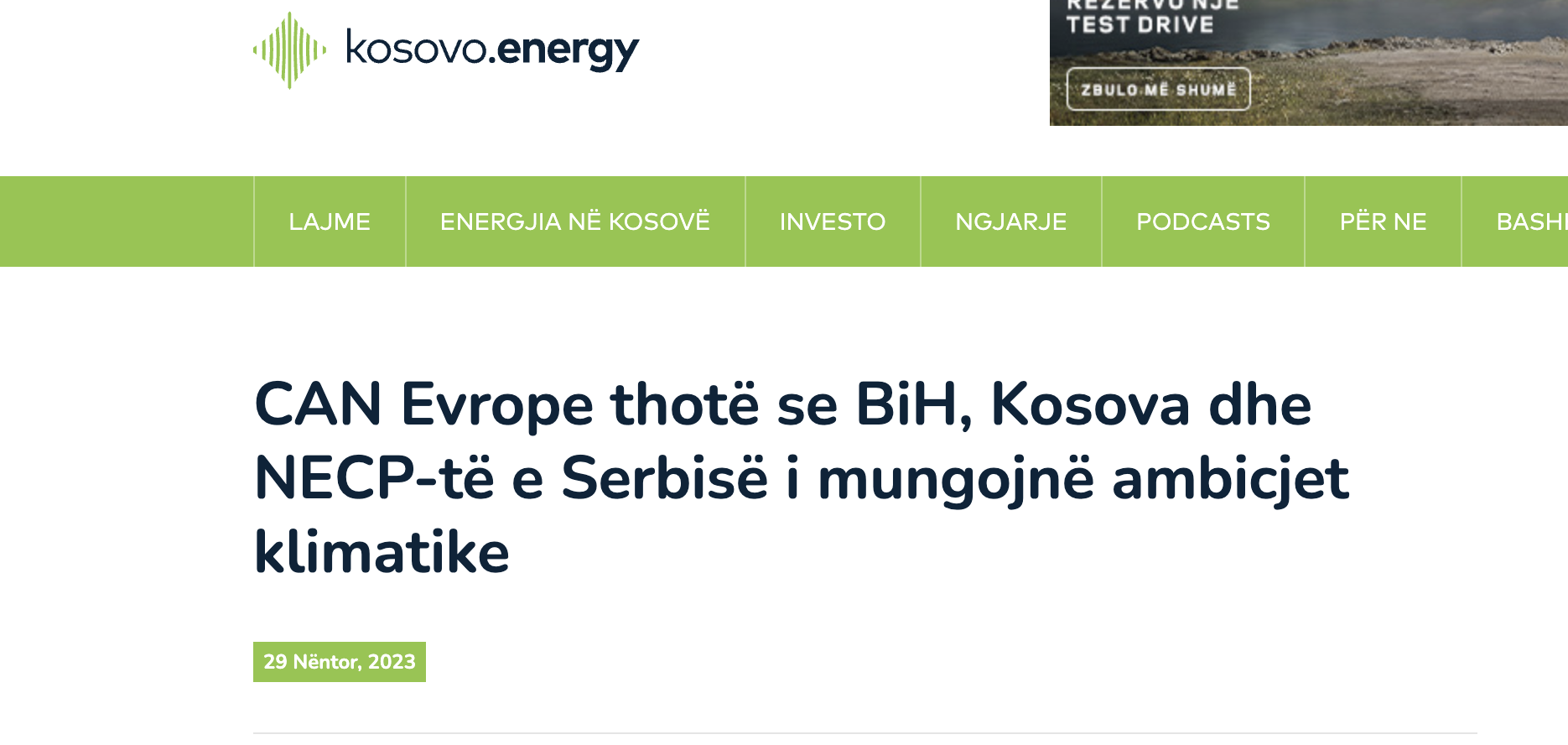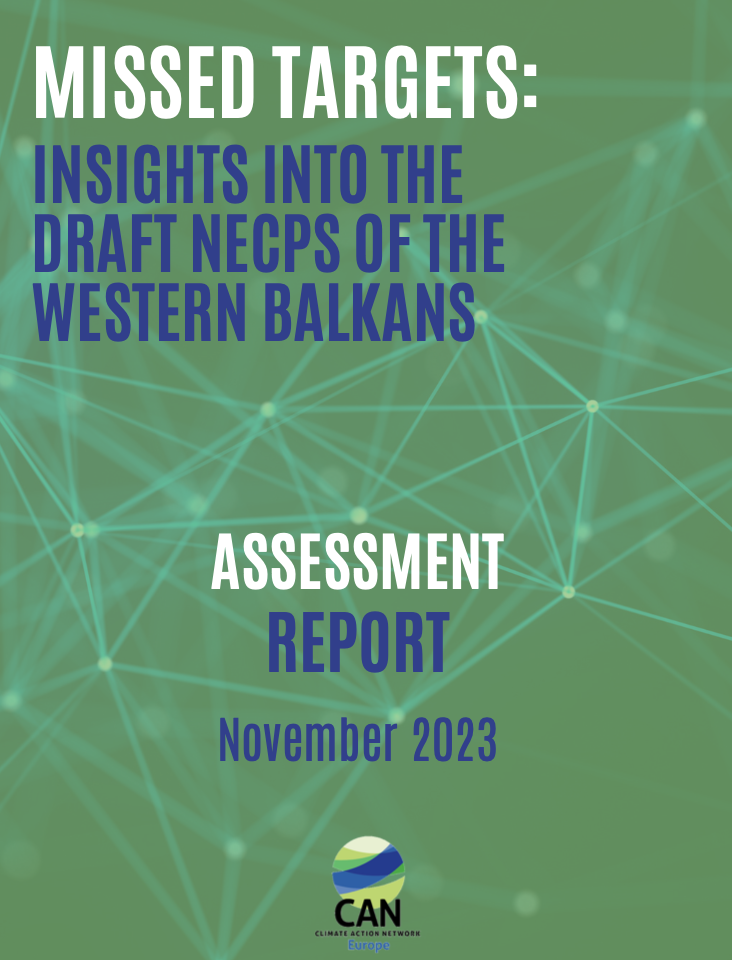The National Energy and Climate Plans are plans outlining pathways towards achieving national 2030 energy and climate targets.
They play a pivotal role in shaping the transition of the energy sector towards decarbonisation and sustainability.

NECPs The main tool to achieve energy & climate targets
HOW?
Providing the steps and strategies for coal phase out;
Providing a clear roadmap for a resilient and sustainable energy system;
Providing concrete, quantifiable, and cohesive policies and measures to achieving the objectives of the NECPs.
NECPs - State of play in the Western Balkans
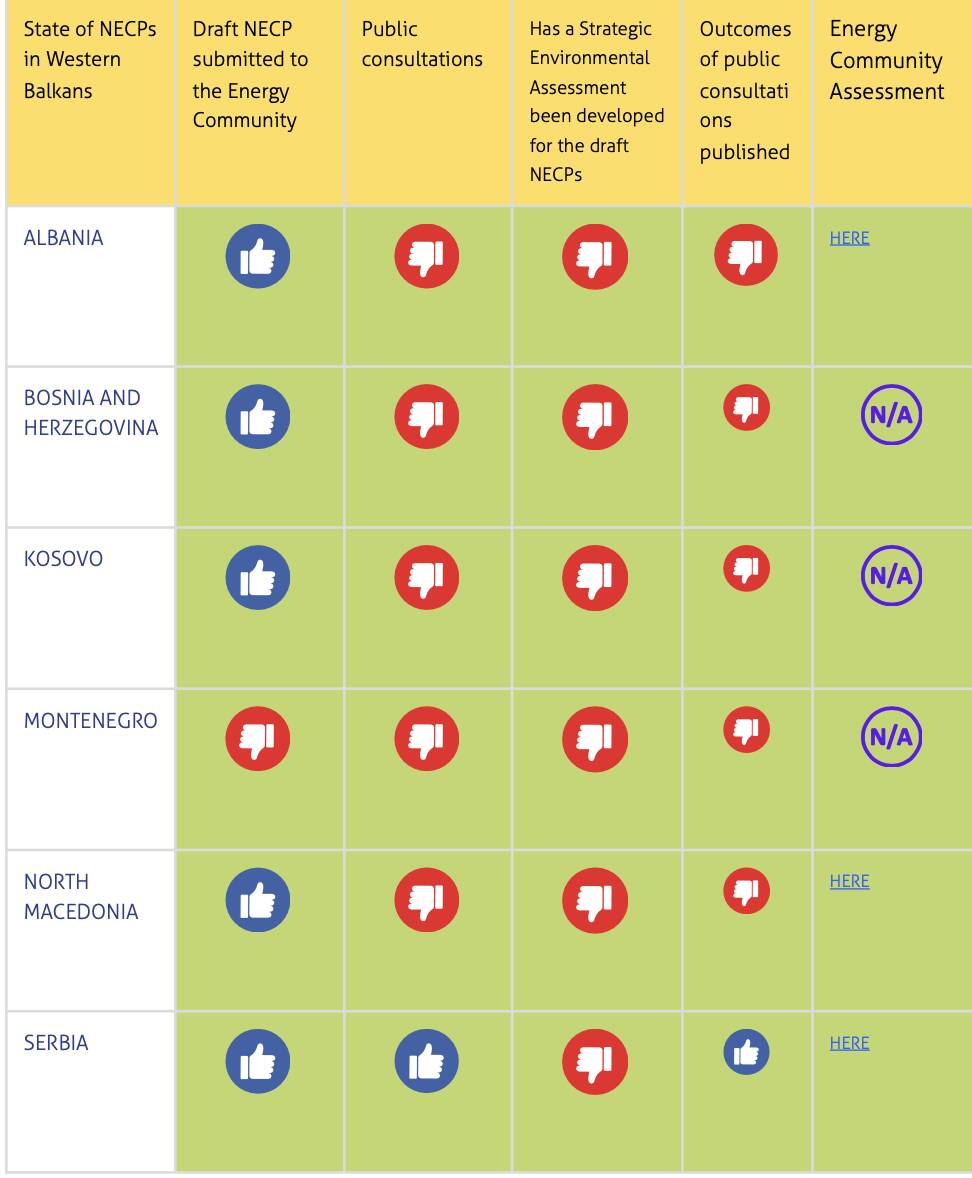
Commendable efforts have been made in drafting the NECPs, but there is substantial room for improvement in their final versions, as well as the need for enhanced ambition and concrete strategies to meet and even surpass the national’s climate and energy targets for 2030 and lead countries towards climate neutrality.
Missed Targets: Insights into the Draft NECPs of Bosnia and Herzegovina, Kosovo, and Serbia

In a nutshell
The NECPs avoid new coal investments but lack a concrete strategy for phasing out existing coal capacities;
The focus on renewable energy is evident, but there is a lack of detailed information on capacity scale, sectoral uptake, and comprehensive grid integration strategies;
Further prioritisation of the “Energy efficiency first” principle and related strategies is needed.
BOSNIA AND HERZEGOVINA
Bosnia and Herzegovina only developed Section A of the NECP. Without Section B, Bosnia and Herzegovina lacks a detailed plan for achieving the outlined objectives. This results in inefficient allocation of resources and potential failure to meet targets.
Furthermore, failing to meet the NECP design criteria as per Governance Regulation, BiH not only would face infringement but it would face challenges in access to funds, having in mind that the EU funding programmes and international IFIs will be using the NECPs as blueprint for investments.
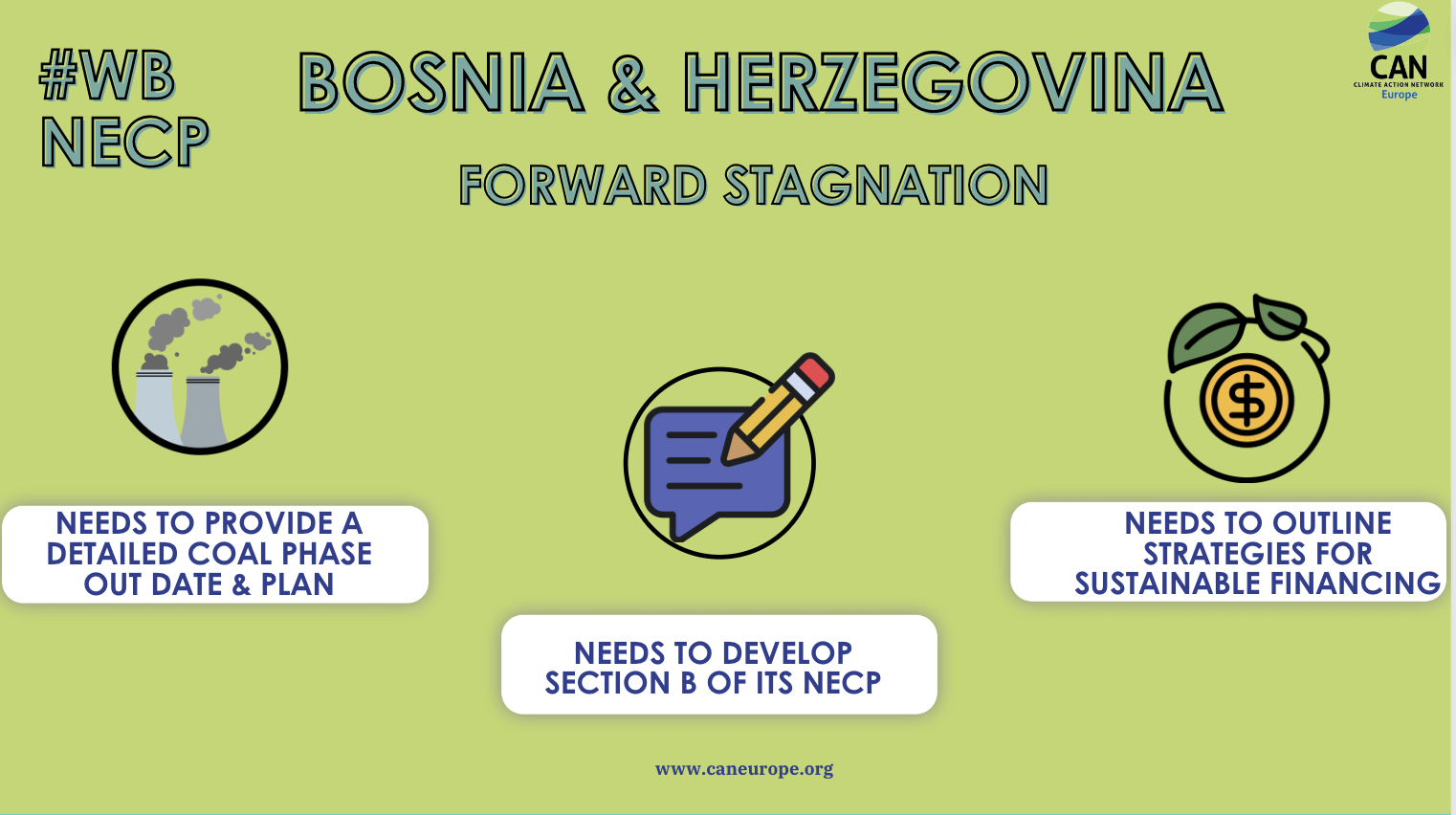
KOSOVO
Kosovo aims for an economy-wide greenhouse gas emissions reduction by 49 per cent relative to the levels recorded in 2016, including emissions from natural sinks. Notably, Kosovo’s forward-looking scenarios do not incorporate any historical emissions data preceding 2016.
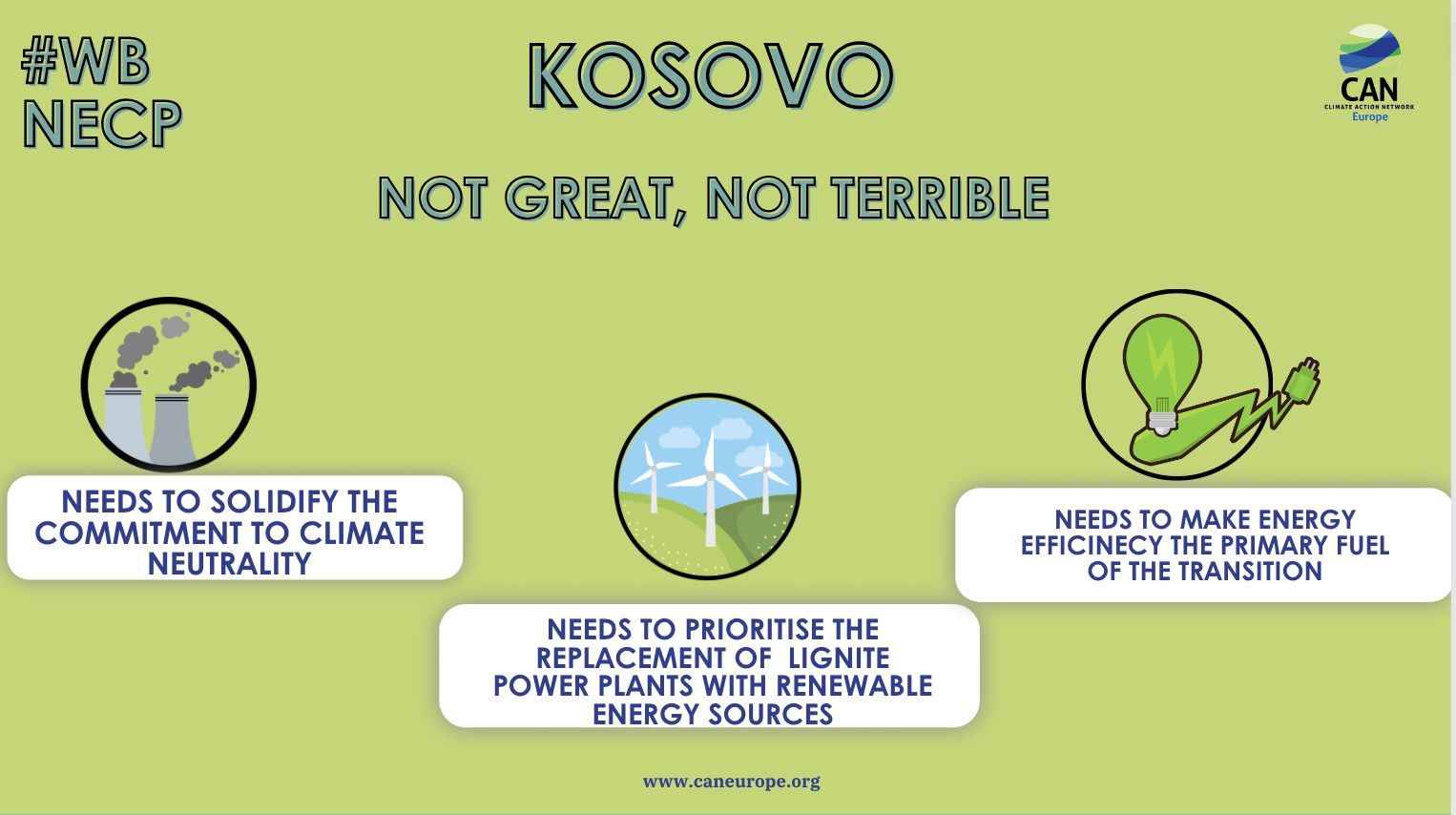
SERBIA
Serbia has a target of reducing its GHG emissions by 40.3 per cent in comparison to the 1990 levels. Furthermore, in the projected outlook for 2030, the anticipated share of renewable energy sources in the gross final energy consumption stands at 33.6 per cent. This figure is notably lower than the target agreed and adopted by the Energy Community, which is set at 40.7 per cent.
As per the NECP, Serbia is not on track to reach climate neutrality by 2050.

"While making progress in their energy transition, the Western Balkans' draft NECPs require significant improvements and revisions. Inclusion of credible and cohesive policies in the final NECPs by June 30, 2024, is essential, serving as a milestone to ensure that the 2030 climate and energy targets pave the way for climate neutrality by mid-century. This deadline is not merely procedural; it represents a critical opportunity for the Western Balkans to align with the EU's energy and climate framework, actively contributing to Europe-wide climate neutrality."
Viktor Berishaj
Energy and Climate Policy Coordinator for South East Europe, Tweet
"With a heavy reliance on coal, the region needs to establish clear and immediate coal phase-out dates and implement corresponding policies. The outdated and polluting coal technology hampers the energy transition in a time where renewable investments are growing more and more. This moment is also an opportunity to ensure a socially and environmentally just transition, that must be reflected in the final NECPs to bring the region closer to the EU."
Chiara Martinelli
Director Tweet
Talking about us



